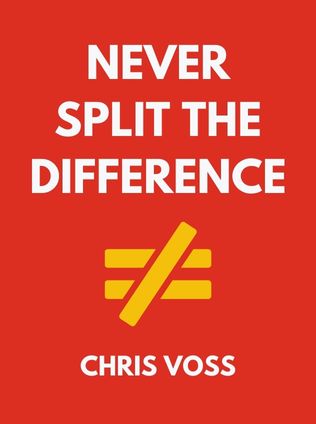
Same Side Selling
How Integrity and Collaboration Drive Extraordinary Results for Sellers and Buyers
By Ian Altman, Jack Quarles
Published 05/2019
About the Author
Ian Altman is an author, strategic advisor, and internationally sought keynote speaker on integrity-based sales and business development. He draws on two decades of experience as a services and technology CEO, as well as research on how customers make decisions, to deliver an approach to selling everyone can embrace.
Jack Quarles is an international speaker, trainer, consultant, and best-selling author. Focusing on making improved investments of time, money, energy, and focus, he has founded multiple startups and saved companies millions of dollars.
Main Idea
"Same Side Selling: How Integrity and Collaboration Drive Extraordinary Results for Sellers and Buyers" by Ian Altman and Jack Quarles offers a revolutionary approach to sales by shifting from an adversarial mindset to a collaborative, integrity-based approach. The book presents sales as a puzzle to be solved together with the client rather than a game to be won, emphasizing the importance of finding the right fit and maintaining long-term relationships.
Table of Contents
- Stop Playing Games
- The New Metaphor: Selling Is a Puzzle
- FIT: Finding Impact Together
- Be Unique
- Create a Same Side Pitch
- Narrow Your Market
- Entice, Disarm, Discover
- Get to the Truth as Soon as Possible
- Understanding the Buyer's Urgency
- Their Readiness Is Your Concern
- Be an Educator
- Mastering the Third-Party Story
- Focus on the Fit
- Go Beyond Features and Benefits
- Sell Results Instead of Resources
- Don't Force the Fit
- Sell Value, Not Price
- See the Big Picture—And Share It
- Deliver Impact
- Stay Involved
- Bringing Others to the Same Side
Stop Playing Games
The traditional metaphor for selling is akin to sports or battle, where one party wins, and the other loses. Altman and Quarles argue that this adversarial approach creates distrust and leads to suboptimal results for both buyers and sellers. Instead, they propose a new metaphor: selling as solving a puzzle together with the client.
"In a game, one side wins and the other side loses. An adversarial mindset is implicit from the start." - Ian Altman and Jack Quarles
Adversarial sales approaches create a dynamic where sellers push for their goals without truly understanding or addressing the client's needs. This leads to short-term gains but long-term losses as trust erodes and clients become wary. The authors advocate for moving away from this zero-sum mentality towards a collaborative approach where both parties work towards a common goal.
- Adversarial sales approaches create distrust.
- Collaborative sales approaches build trust and deliver better results.
The New Metaphor: Selling Is a Puzzle
Altman and Quarles introduce the puzzle metaphor for sales, where both the buyer and the seller work together to find the right fit. This collaborative approach emphasizes understanding the client's needs and providing solutions that genuinely solve their problems.
"Selling is a puzzle. With a puzzle, you are solving. With a puzzle, you create something." - Ian Altman and Jack Quarles
By viewing sales as a puzzle, the relationship between seller and buyer shifts from adversarial to cooperative. Both parties sit on the same side of the table, looking at the problem together and figuring out how to solve it. This perspective fosters open communication, mutual respect, and a focus on finding the best possible solution.
- Collaborative problem-solving mindset.
- Focus on finding the right fit for the client's needs.
FIT: Finding Impact Together
FIT stands for Finding Impact Together, a mantra that can guide every stage of the sales process. It emphasizes discovering the client's problems, understanding their impact, and collaboratively finding solutions.
"Finding impact means mutually agreeing on why the client needs help and what the likely results of your solution will be." - Ian Altman and Jack Quarles
This approach encourages sellers to engage deeply with their clients, understanding their issues from multiple angles. The goal is not just to make a sale but to find a meaningful solution that will have a positive, lasting impact on the client's business.
- Finding: Teaching, sharing, and diagnosing the client's needs.
- Impact: Focusing on how the solution addresses the client's problem.
Be Unique
Instead of trying to dominate a crowded field, successful sellers focus on their unique value proposition. They understand which problems they can solve best and target their efforts accordingly, avoiding the adversarial trap of trying to sell to everyone.
"The most successful sellers know exactly what they bring to the marketplace and focus on the areas where they can have the greatest impact." - Ian Altman and Jack Quarles
Understanding and clearly defining your unique value proposition is crucial. It allows sellers to articulate how they are different from competitors and why they are the best choice for solving specific client problems. This clarity helps in attracting the right clients and establishing long-term, mutually beneficial relationships.
- Clear definition of unique value proposition.
- Targeting the right prospects to maximize impact.
Create a Same Side Pitch
The Same Side pitch starts with the customer's challenge and ends with their success. It involves three elements: identifying the client's pain, explaining how you help, and describing the positive outcomes.
Sign up for FREE and get access to 1,400+ books summaries.
You May Also Like
How To Win Friends and Influence People
The All-Time Classic Manual Of People Skills
By Dale CarnegieQuiet: The Power of Introverts
The Power of Introverts in a World That Can't Stop Talking
By Susan CainThe Lean Startup
How Today's Entrepreneurs Use Continuous Innovation to Create Radically Successful Businesses
By Eric RiesThe Ride of a Lifetime
Lessons Learned from 15 Years as CEO of the Walt Disney Company
By Robert IgerAtlas of the Heart
Mapping Meaningful Connection and the Language of Human Experience
By Brené BrownThe Hard Thing About Hard Things
Building a Business When There Are No Easy Answers
By Ben Horowitz



















